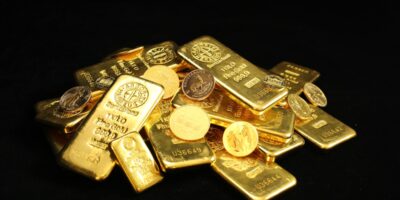How Do You Spend Gold
Gold has fascinated cultures for millennia. Today, it plays various roles in economies and individual financial strategies. This article delves into how to spend gold, covering practical applications and investment opportunities.
Investing in Physical Gold

Buying gold bullion is one of the most straightforward ways to invest in gold. Bullion comes in bars and coins, often with high purity levels. Coins like the American Gold Eagle or the Canadian Maple Leaf are popular choices. You can store bullion at home, in a bank safety deposit box, or with professional vault services.
Jewelry is another form of physical gold investment. While not as pure as bullion, gold jewelry can hold significant value. It’s also wearable and can serve as both an investment and a fashion statement.
Gold Exchange-Traded Funds (ETFs)
Gold ETFs allow you to invest in gold without handling physical gold. These financial instruments track the price of gold and are traded on stock exchanges. Shares in a gold ETF provide an easy way to gain exposure to gold’s price movements. They are more liquid than physical gold, making them easier to buy and sell quickly.
Gold Stocks and Mutual Funds
Investing in gold mining companies is another method to spend gold. These companies are involved in the extraction and sale of gold. Their stock value often correlates with gold prices, though it can be affected by other factors like company performance and broader market trends. Mutual funds that focus on gold provide diversified exposure to multiple mining stocks, reducing risk.
Gold Futures and Options
Futures contracts allow you to buy or sell gold at a predetermined price on a future date. These are high-risk investments suitable for experienced traders. Options on gold offer the right, but not the obligation, to buy or sell gold at a set price. Both futures and options require a deep understanding of market dynamics and are not recommended for beginners.
Gold Savings Programs
Several financial institutions offer gold savings plans. These programs allow you to accumulate gold over time by making regular payments. The accumulated gold can be redeemed in physical form or as cash. Such programs provide a disciplined way to build a gold investment portfolio.
Digital Gold
Digital gold platforms allow you to buy, sell, and store gold online. These platforms are often backed by physical gold stored in secure vaults. Digital gold can be fractionalized, enabling small investments. Transactions are simple and can be executed 24/7, offering flexibility.
Central Bank Gold Reserves
Countries hold significant gold reserves as part of their monetary policy. Central banks use gold to hedge against inflation and currency risk. While individuals cannot directly spend central bank gold, understanding this economic use provides insight into gold’s role in global finance.
Gold Loans
In some regions, gold loans are a popular financial product. Individuals pledge their gold as collateral to secure a loan. This practice is common where gold ownership is prevalent, providing liquidity without selling the gold outright.
Gold in Technology
Gold’s conductivity and resistance to corrosion make it valuable in electronics. It’s used in connectors and vital components in devices like smartphones and computers. Spending gold in technology translates to its application in high-tech industries.
Understanding Gold’s Historical Role
Gold has been used as currency, in religious ceremonies, and as a status symbol throughout history. Its historical significance adds to its perceived value. While modern uses are more financially driven, historical context enriches our understanding of gold’s role.
Gold as a Hedge
Gold is often seen as a hedge against economic uncertainty. During times of inflation or currency devaluation, investment in gold can preserve wealth. It’s considered a safe-haven asset, maintaining value when other investments falter.
Inflation and Gold
Gold often increases in value when inflation rises. Fiat currencies can lose purchasing power over time. In contrast, gold’s value typically remains stable or increases, making it a favored asset during inflationary periods.
Geo-Political Stability
Gold can be a hedge against geo-political risks. During times of geopolitical instability, gold prices often rise as investors seek safe-haven assets. Examining gold price movements can offer insights into global political climates.
Tax Implications
Different countries have various tax treatments for gold investments. Capital gains tax may apply when selling gold for profit. Understand the local tax regulations before investing to optimize your strategy.
Gold and Cultural Significance
Gold holds cultural significance in many societies, manifesting in weddings, festivals, and traditional ceremonies. Cultural traditions can influence gold demand, affecting its market price.
Environmental Impact
Gold mining can have significant environmental impacts, including deforestation and water pollution. Ethical considerations should factor into decisions about spending gold. Sustainable and ethical investing is an emerging focus in the gold industry.
Evaluating Gold Purity
- 24 karat gold: Pure gold
- 22 karat gold: 91.6% pure
- 18 karat gold: 75% pure
- 14 karat gold: 58.3% pure
Purity levels impact gold’s value and use. Higher purity gold is softer and more suitable for investment, while lower purity is more durable and used in jewelry.
Counterfeit Risks
Counterfeit gold is a risk in the market. Ensuring authenticity through reputable dealers and certifications helps mitigate this risk. Understanding hallmarking and verification methods are crucial for gold buyers.
Monetizing Gold
Besides selling for cash, gold can be monetized in several ways. Pawn shops, recycling old jewelry, or trading it for other assets are common practices. These methods provide liquidity and flexibility.
Future Trends
Technological advances and changing economic landscapes will shape how gold is used. Blockchain technology, for example, is being explored to increase transparency in the gold supply chain. Staying informed about trends can provide an edge in gold investments.
Understanding these diverse facets of spending gold offers a comprehensive view of its role in today’s economy and personal finance.
“`



Subscribe for Updates
Get the latest articles delivered to your inbox.
We respect your privacy. Unsubscribe anytime.